How to Enjoy Your Fall Garden and Get a Head Start on Spring.

By: Jeni Lee, RediRoot
We put our heads together to come up with a comprehensive list of how to enjoy your fall garden and get a head start on spring.
In the garden, for the garden
A number of things can and should be done around the yard this time of year to help a garden run smoothly. Fall gardening helps safeguard the health of perennials, clean the garden, and otherwise prepare it for the coming seasons. Ultimately fall gardening is a secret to making your spring chore list lighter and protecting your garden investment.
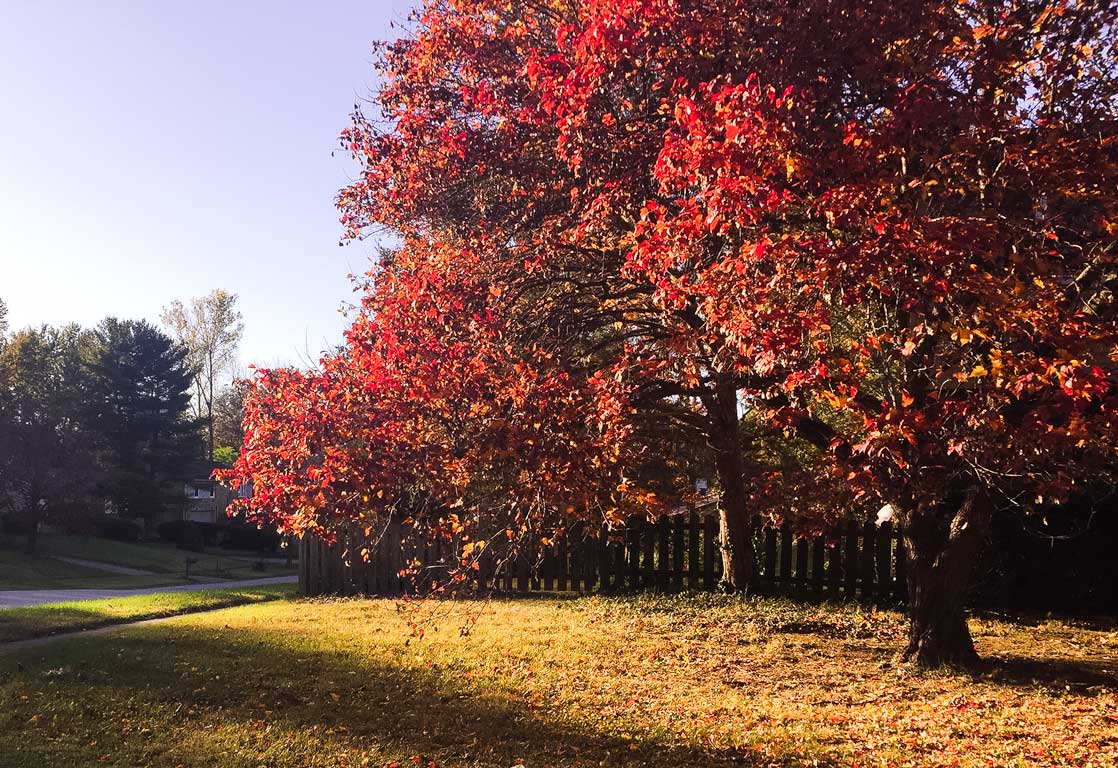
Autumn by Ben Martin via Flickr
Tree & Shrub Maintenance
Fall is the best time for both pruning and transplanting woody plants such as trees and shrubs. The plants are getting ready to go dormant at this time so pruning and planting during fall provides woody plant material with a chance to rest and recover before winter sets in fully.
If you are looking to purchase new trees for your yard, this can also be a fantastic time to visit your local garden center to see what they have available for fall.
Mulch
Mulch in the fall is a great way to prevent erosion that may occur in harsh winter weather. It also helps to protect roots during freezing temperatures. You can mulch with a variety of materials including; peat, compost, straw, leaves, and bark. Think about what type of plants you have when you are preparing to mulch. If you are mulching around hydrangeas or blueberries, for example, you might use pine bark or needles which are more acidic than straight compost.
Note about fall mulching:
Mulching is generally a good practice but be intentional, if you have a section of your garden that features primarily self-sowing plants mulching around them can inhibit germination in spring.

Mulched Bed by Malcolm Manners via Flickr
Compost
Due to the nature of fall, it is a great time to compost. It is a time for cleaning out the garden and much of that material, along with leaves and kitchen waste can go straight into the compost. Chicken manure is another great addition to compost. You will want to avoid adding plants that have gone to seed or show signs of disease, dog or cat feces, and meat or meat byproducts. Make sure your compost bin is in a sunny place if possible since heat helps create an ideal environment for the microbial activity that breaks down compost. If you are looking for more in depth information about composting, Gardening Know How has a plethora of articles available.
Note on using chicken manure:
Because chicken manure is high in nitrogen it is considered ‘hot’ and can burn the roots and leaves of your plants if it does not have time to break down. Adding it into compost gives it time to break down properly before it goes to the garden.
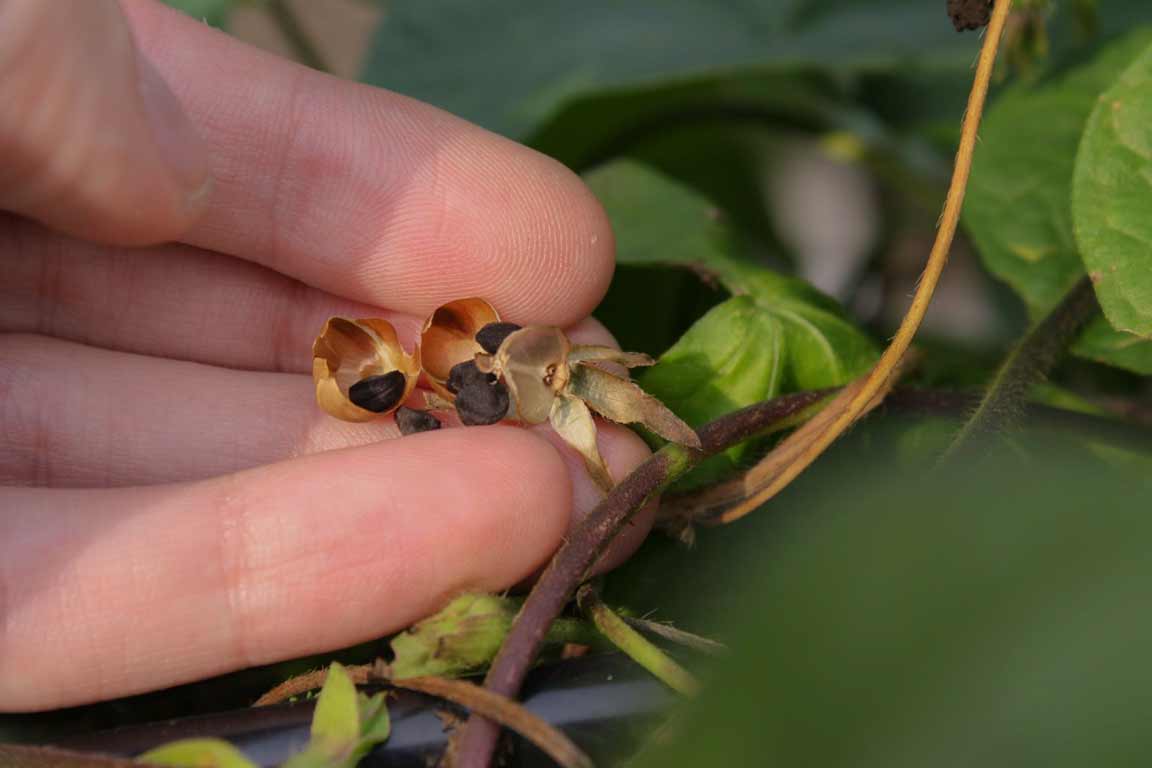
Saving Morning Glory Seeds by anneheathen via Flickr
Saving Seeds
If you are interested in saving seeds let blooms of flowering plants dry out completely. Once dry, put the flowers in a brown paper lunch bag and give them a shake- this is generally enough to separate the seed from the flower. You can discard the bloom at this point and put seeds into an envelope marked with the type of seed, color (if applicable), and the date.
Perennial Care
Fall is a great time to plant perennials so if there are any you have your eyes on it is not too late! If purchasing new perennials look for signs of plant health such as healthy foliage and roots. While you can’t see the roots in their nursery pot look at the bottom of the plant and try to purchase one with no visible roots.
Existing perennials in your yard may benefit from deadheading (pinching off dead flowers), cutting back, or separation. If you are unsure if your plants benefit from deadheading or being cut back a quick Google search may be helpful but we also really liked this list from The Spruce. If you have perennials that are outgrowing their current space consider separating them into two plants. Simply dig up as much of the root ball as possible, look for a natural division in plant growth, then pull apart and replant.

Indian Blanket by Jerry via Flickr
Annual Care
As annuals stop producing make a plan to remove them from your garden. You may choose to replace them with some fall-friendly annuals or you can fill that space with mulch to prepare for next year’s garden.
Bulbs
Now is the time to dig up summer-blooming bulbs and save them to replant for next year. It is also the time to plant spring-blooming bulbs such as hyacinth, daffodils, tulips, crocus, and more.
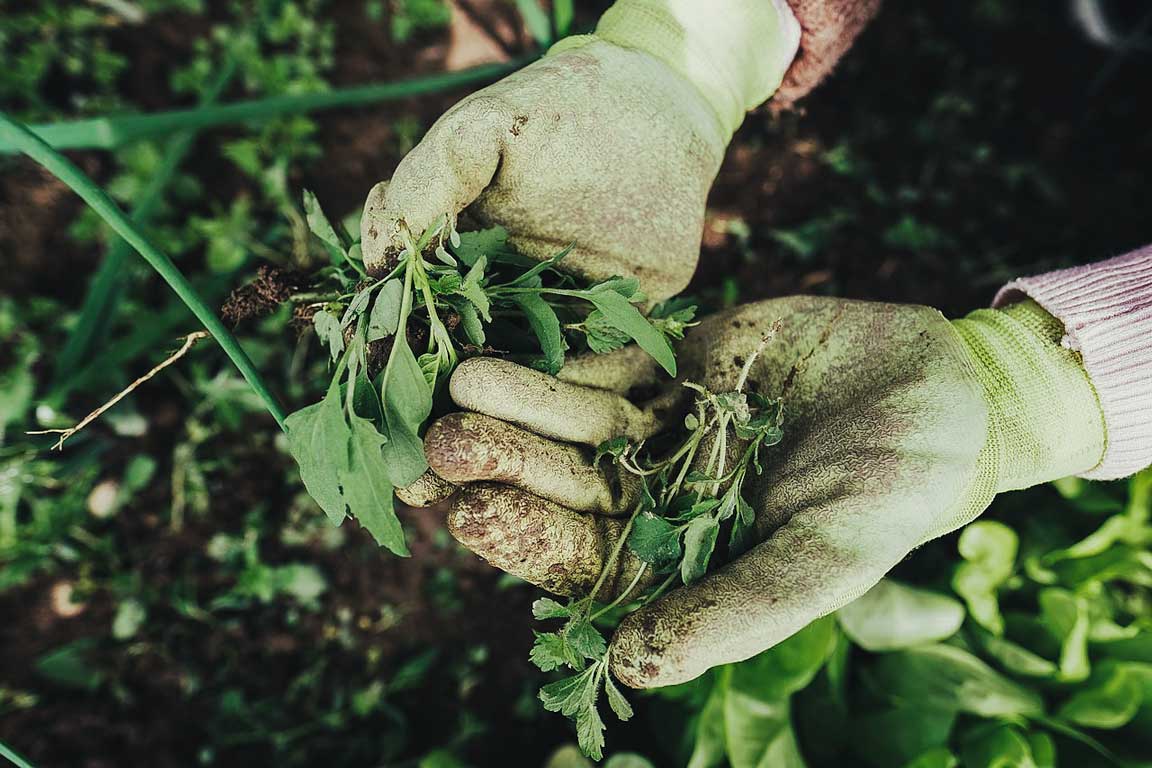
Gardening via Pixabay
Miscellaneous Care and Prep
If you have plans to expand your garden fall can be a great time to begin that process and provide the added benefit of lightening your spring workload. You can fence off a new area, add a new bed or lay a barrier such as cardboard or weed cloth to kill grass and weeds.
General Clean-Up
Ensure fertilizers and amendments are stored in a clean dry place, all tools are put up, and miscellaneous garden items are secured. This process is well worth the time it may take and there is a certain comfort in having everything in order and knowing you have what you need for the coming seasons.
Fall Planting
There are a fair number of plants that will grow and thrive in the increasingly cool months that usher in winter. By implementing elements of year-round gardening often referred to as succession planting you can keep your garden producing well into fall and even winter, depending on where you live.
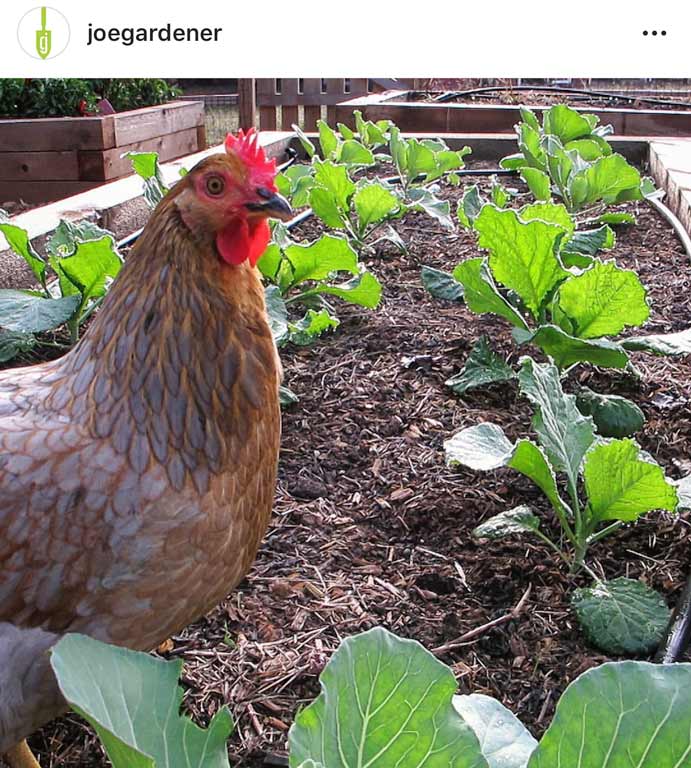
Fall Vegetable Planting by Joe Lamp’l via Instagram
In the Vegetable Garden
A number of vegetables not only do well in the fall but some grow better than other times of the year. Many fall vegetables can (and some should) actually be started as early as August. These include cauliflower, broccoli, and brussel sprouts among others. If you are behind where you want to be in your planting some garden centers, and specialty growers carry starts specifically for fall gardens so you can skip planting by seed. There are also plenty of fast-growing plants that can be sown in September. Here is our shortlist:
- Spinach
- Kale
- Arugula
- Lettuce
- Bok Choy
- Swiss Chard
- Peas
- Turnips
- Radishes
- Garlic (plant in late fall for spring harvest)
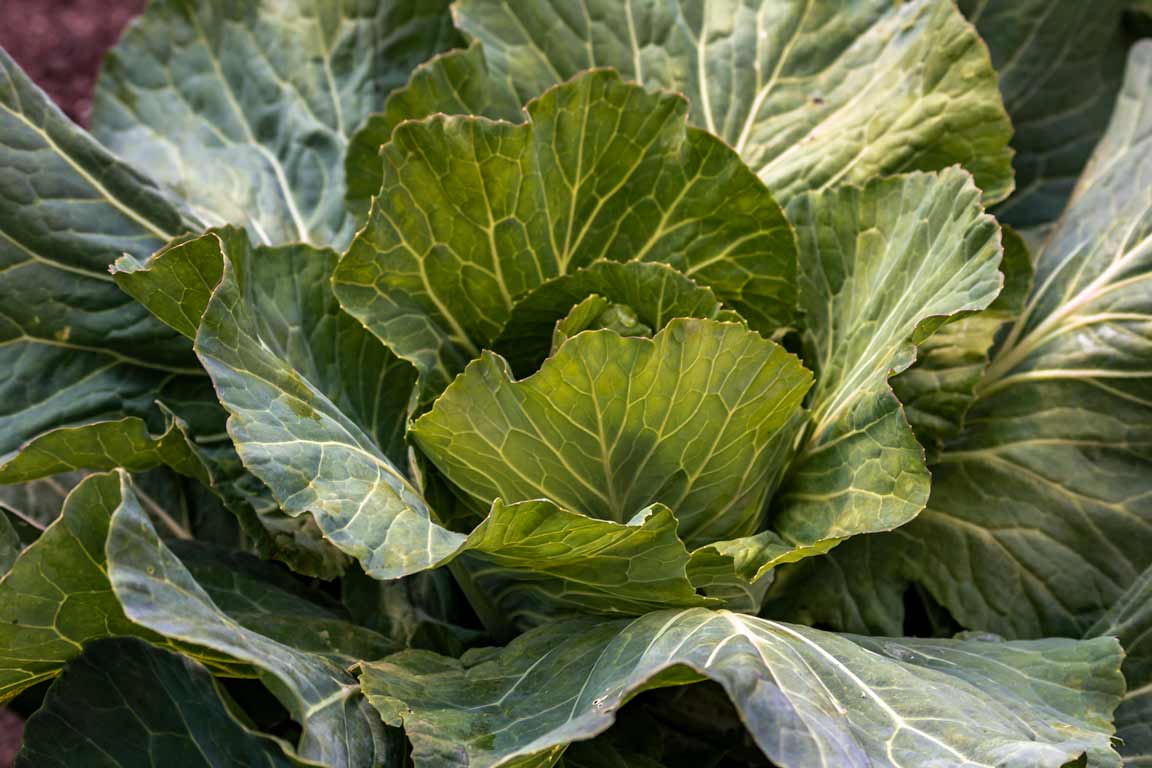
Cabbage by Rafael Saldana via Flickr
Once you have an idea of what you’d like to plant we recommend looking at fall planting guidelines for your specific zone and from there just have fun with it.
If you have kids this is a great time to get them into the garden- they are a little less distracted by summer activities and for those already in school, it is a great way to connect with them and catch up on the day to day happenings in their life.
In the Flower Garden
If it is color you are after in fall there are definitely some plants that will deliver. Some of these start blooming in late summer and keep going through fall, others are fall-blooming annuals or have other fall interest.
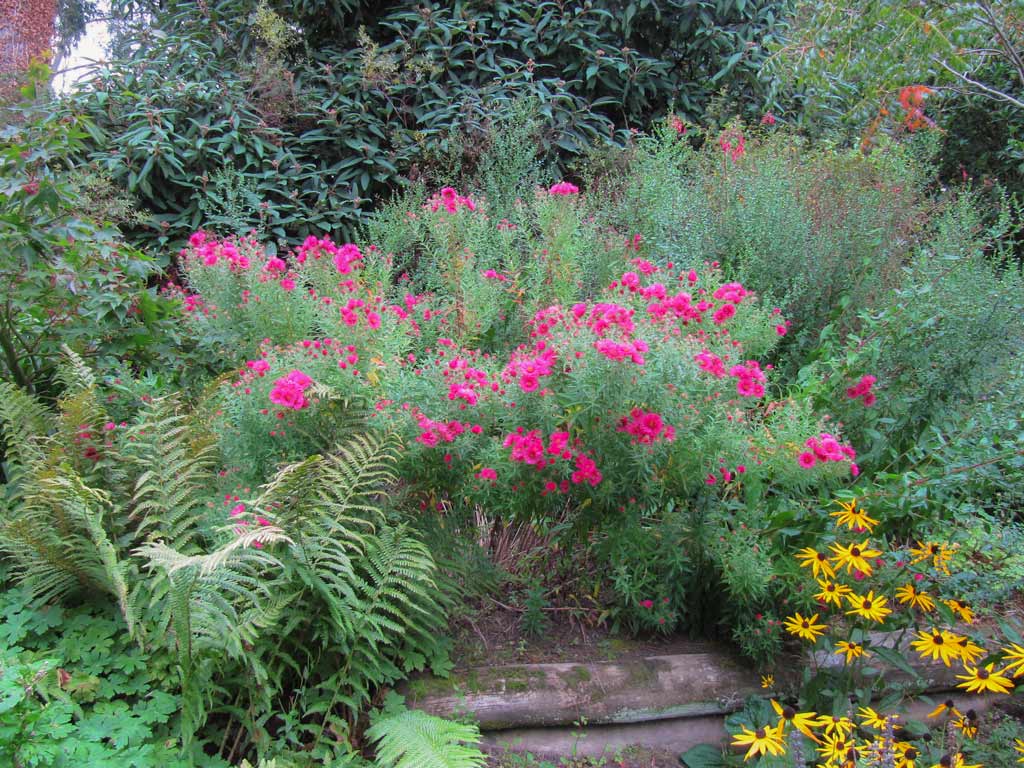
Asters by Lenora Enking via Flickr
Asters (perennial, zone 4-8)
Asters are a fall garden staple. Their bright daisy-like flowers bloom well into fall bringing a bright cheery pop of color to your garden. There are many varieties of Aster’s from the short compact varieties to tall growing types that also look beautiful when cut and used in flower arrangements.
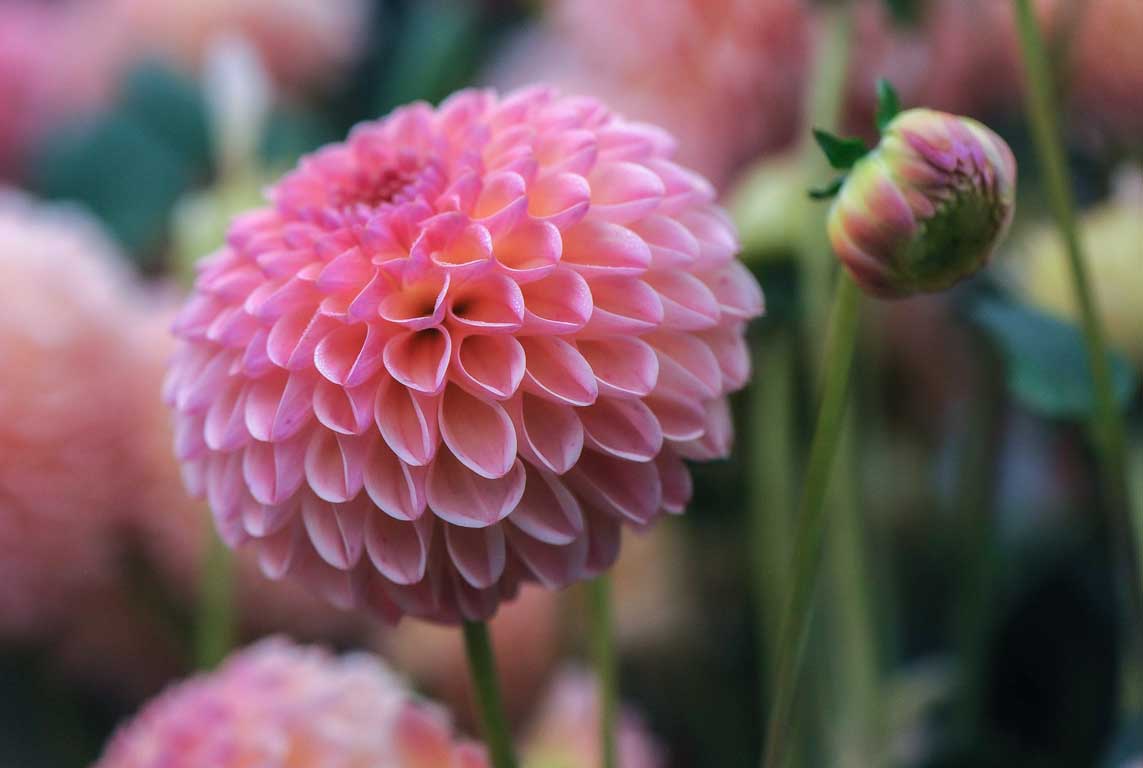
Dahlia by Mark James via Unsplash
Dahlia (bulb, zone 7-10)
Memories of Dahlias at the pumpkin patch always come to mind in fall. They are such happy blooms and beautiful to look at. One important note is that dahlias are a bulb that you should dig up at the end of fall after a frost. It is possible to leave them in the ground over winter if you live in an area with more temperate winters but if you are unsure- err on the side of caution.
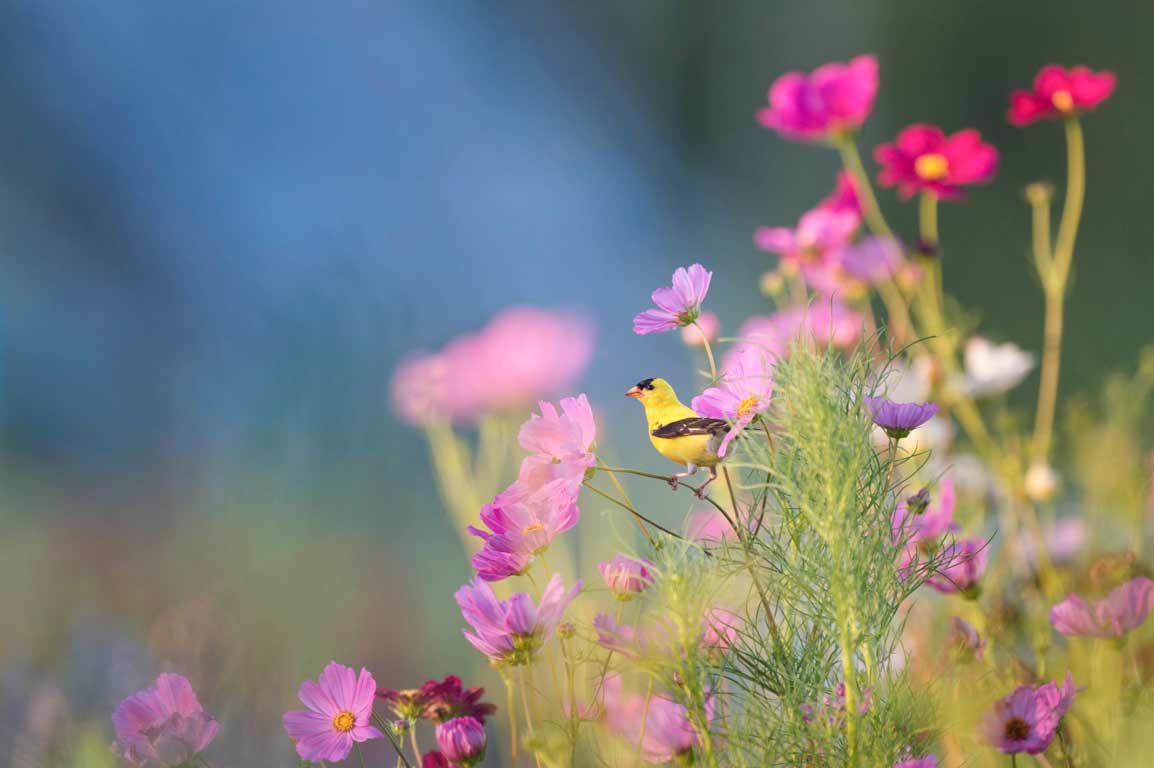
Cosmos by Ray Hennessy via Unsplash
Cosmos (annual, zone 2-11)
Cosmos will bloom until the first frost hits, they are playful blooms that would look right at home in a bouquet of wildflowers and if you look for them you can find a plethora of colors.
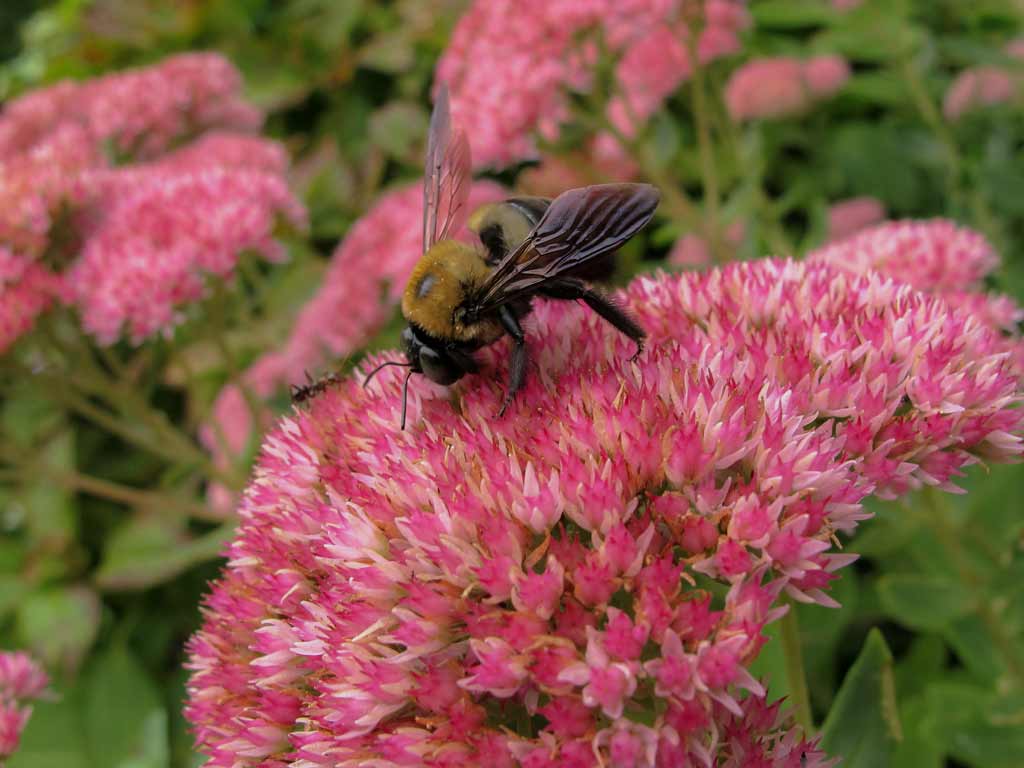
Sedum Herbstfreude Autumn Joy Sedum and Bee NYBG by Kristine Paulus via Flickr
Stonecrop (perennial, zones 3-9)
Sedums such as Stonecrop (above) are not only hardy but they have really beautiful pink to red flowers that come on in late summer to early fall.

Pansies by James Petts via Flickr
Pansies (perennial often grown as annuals or biennials)
We often see them in spring but many do not survive the summer heat. These flowers like cooler temps and when planted in fall you can enjoy their blooms- often up until a hard frost.
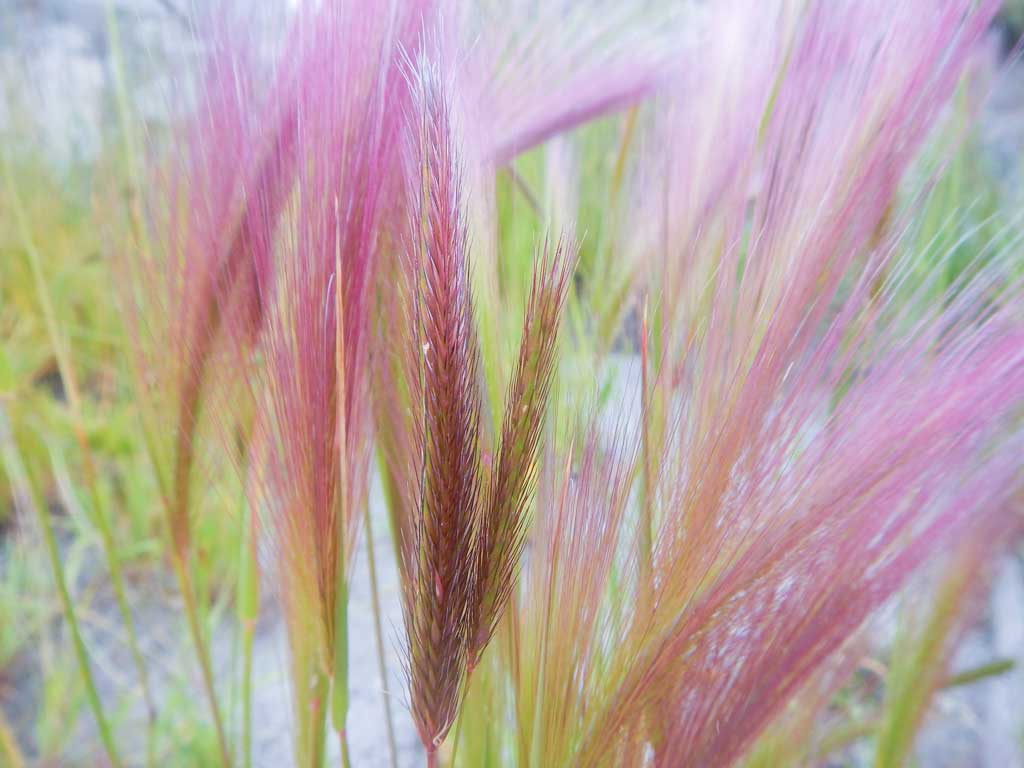
Hordeum jubatum (Foxtail Barley) by Matt Levin via Flickr
Grasses (perennial)
Grasses offer the potential for year-round interest and blend beautifully in to flower beds. Check out Foxtail Barley, Japanese Blood Grass, and Big Bluestem Grass for starters or head to a local garden center that has a variety of grasses that will perform well in your area.
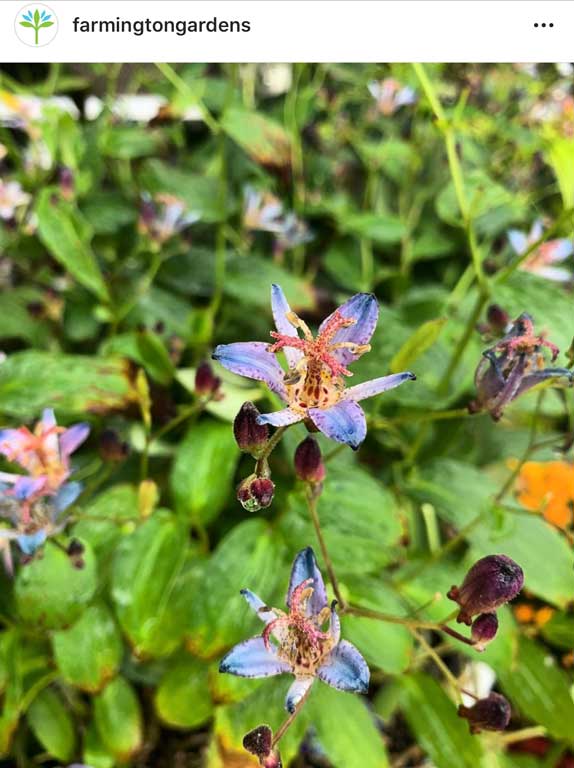
Toad Lilies by Farmington Gardens via Instagram
Toad Lily (perennial, zones 4-9)
This one is a new one to us but I had to share after seeing it on Instagram. It has beautiful blooms that continue into fall. The blooms look like a cross between an orchid and a lily. We think they are beautiful!
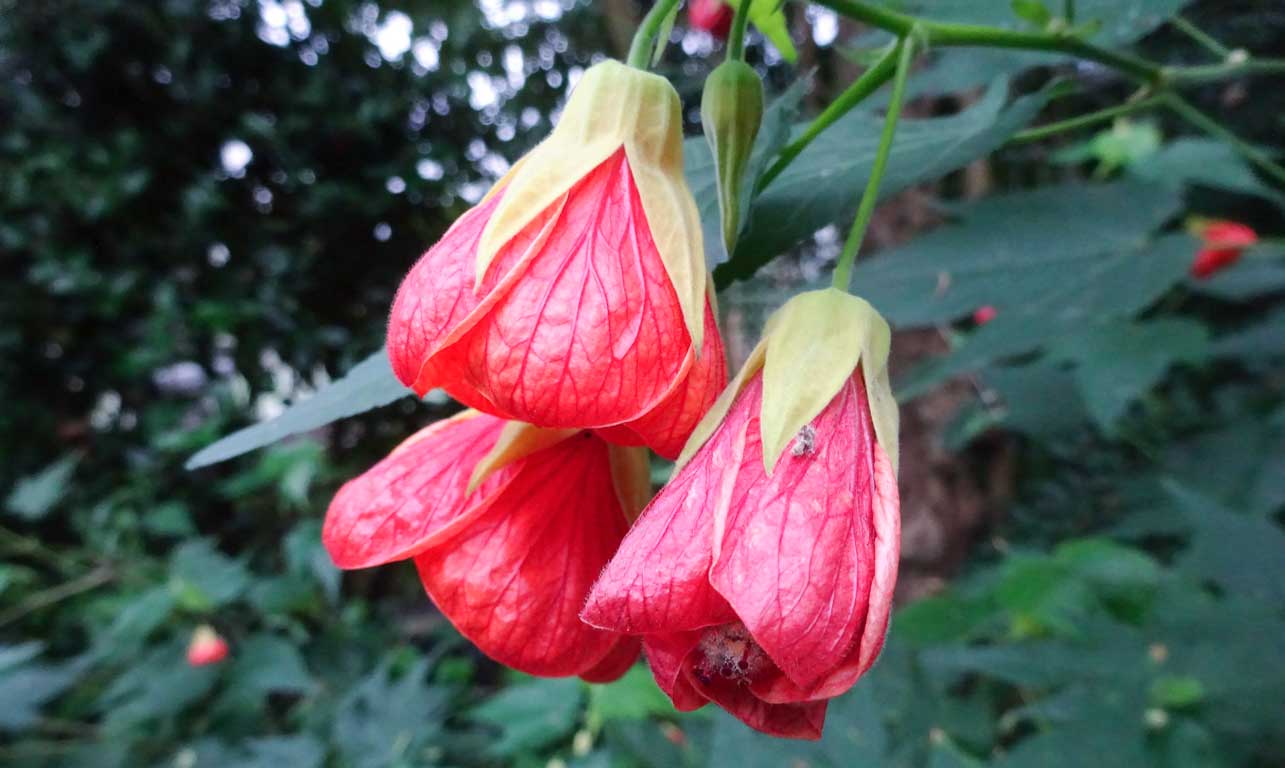
Abutilon by Jungle Rebel via Flickr
Abutilon (perennial, zone 9-10)
While abutilon may not be winter hardy everywhere they are a beautiful compact broadleaf evergreen with bell-shaped blooms that look quite tropical. They bloom well into fall and they are generally happy in containers so you can overwinter them indoors and put them outside again in early spring.
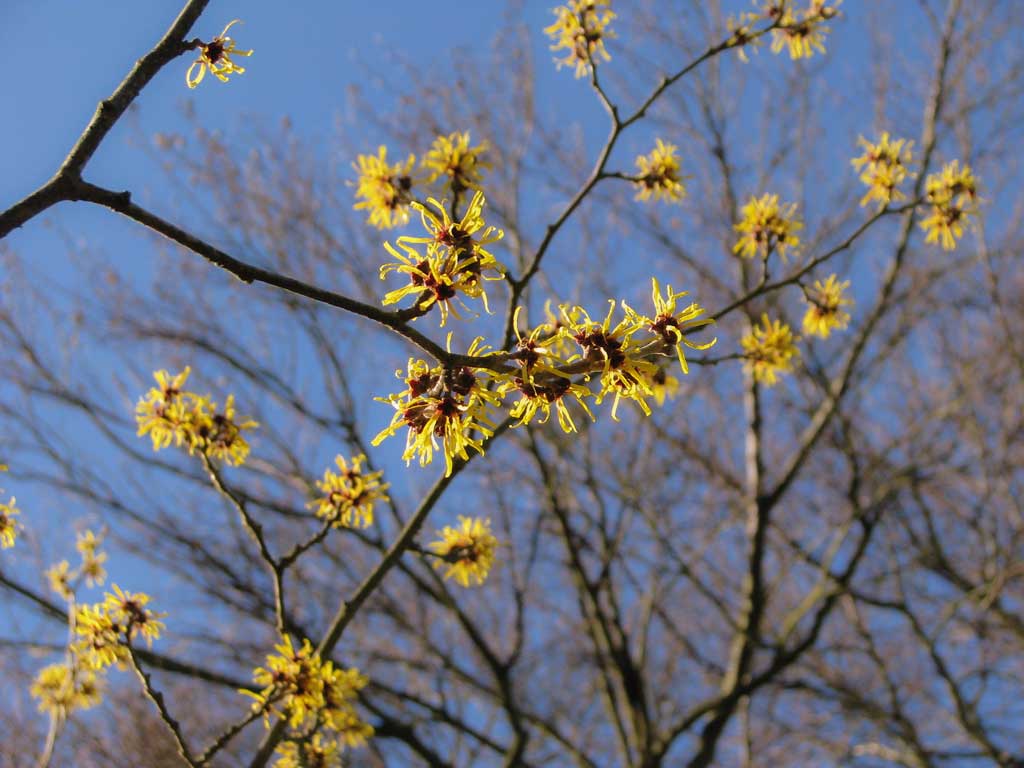
Hamamelis in Woods by Peganum via Flickr
Witch Hazel (deciduous shrub, zone 5-8)
This amazing fall shrub can have a tendency to look a lot more tree-like than shrub-like. There are fall and spring-blooming varieties of witch hazel but your local garden center should be able to point you in the right direction if it is fall color you are after. The autumn blooming varieties begin to put on flowers just as the leaves start to turn color. Blooms range from bright yellow to red-orange and they look like something out of a Dr. Seuss book- in a good way. The blooms are whimsical and fun while the shrub itself displays beautiful branching and a bright sunny color during a time of year that tends to get a bit gloomy.
Additional Resources
There are a lot of great resources out there but the Missouri Botanical Garden’s website is worth a mention. We used it as a resource to verify the hardiness zones of plants listed in this article and quite honestly wish we had come across it sooner. They have a plant finder tool that will allow you to search all kinds of parameters including your zone and the flowering times of different plants. Check them out and if you have a favorite garden reference please share it in the comments.
Garden Centers In Fall

Garden Center by Christin Noelle via Unsplash
In a way visiting a Garden Center in fall is like going to a peaceful plant oasis. The summer crowds are largely gone and you have the time and space to look around freely.
Beyond avoiding crowds fall garden center trips generally provide you with access to knowledgable staff, treasures for fall decorating, and of course sales. Because the most popular gardening season is ending garden centers are working to sell a surplus of the plants they have left. The photo below from Al’s Garden Center in Oregon highlights their fall sale as the “biggest sale of the year” and they are not alone.
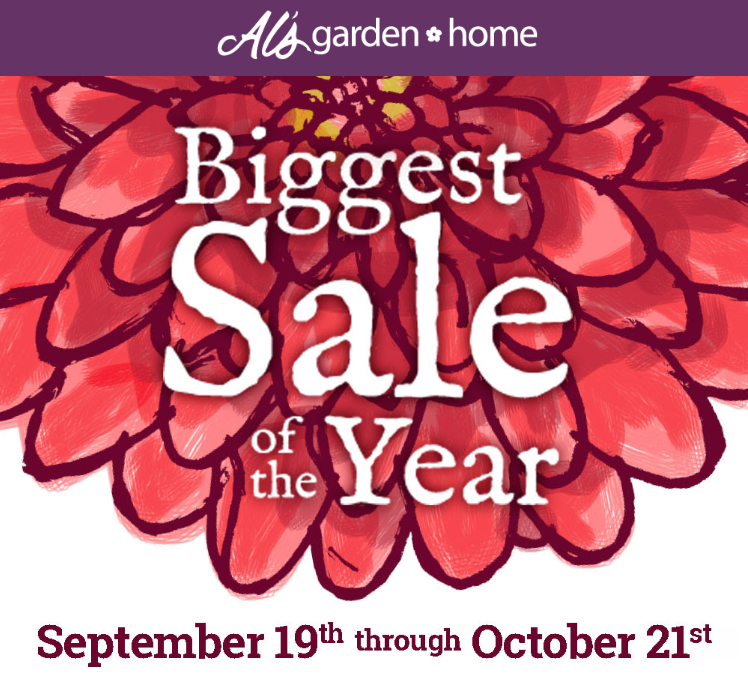
Using RediRoot & Other Planters In Fall
RediRoot planters all feature a cutout design that brings oxygen to the root zone to support root health. When keeping plants or trees in RediRoot through the fall and winter you may want to take certain precautions to help ensure that your plants stay healthy despite the cold weather- this is actually true of all container planters.

Photo by RediRoot
Plants in planters are much more susceptible to cold weather than plants in the ground. This is mainly because they have the potential to freeze and thaw multiple times in the winter which puts additional stress on the plants.
To give your plants the best potential to come back you need to protect them from the elements to some extent. Planters that are hardy to a zone or two above yours generally overwinter just fine in your yard. We suggest moving the planters under the patio or closer to the house, out of the wind and elements. You can also mulch around the planters or wrap them with wool for a bit of added protection.
If you have plants that are hardy in your zone but not zones colder than where you are located (i.e. you live in zone 8 and have a plant hardy to zone 7 or 8). You can overwinter these plants in your unheated garage. This minimizes temperature fluctuation which can help protect your plants.
Whichever method you use to help protect your planters this fall and winter you will need to make sure your plants have access to water. Try to ensure that they are watered but not staying wet for too long. This will help to avoid root rot. Also, avoid fertilizing these planters until spring as you want the plant to be dormant through the winter.
Finally- if you have tropical plants that enjoy being outdoors during the summer you can often move them indoors for the winter quite easily. Begonias, cardamom, alocasia, orchids, and cacti are all examples of this.
We hope this offers you a few new ideas about the opportunities in your fall garden. If you have any thoughts or are interested in a feature about your garden reach out to us grow@rediroot.com

About the Author
Jeni Lee works for RediRoot as our Asst. Director of Marketing. She has a love of plants, and enjoys being outdoors, gardening, and houseplants.
